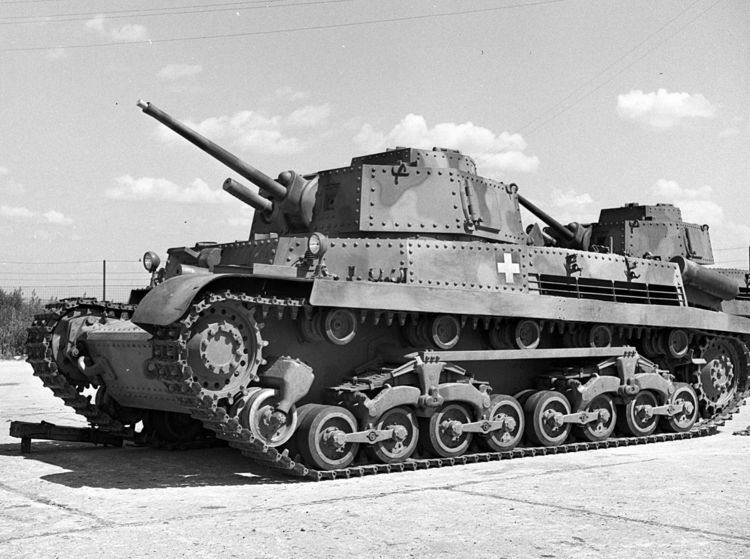Designed 1938 | Designer Škoda Works Produced 1940–1944 | |
 | ||
The Turán was a Hungarian medium tank of World War II. Based on the design of the Czechoslovak Škoda T-21 medium tank prototype, it was produced in two main variants: the 40M Turán (or Turán I) with a 40 mm gun and the 41M Turán (or Turán II) with a 75 mm gun. A total of 424 were made.
Contents
A prototype variant, the 43M Turán (or Turán III) was also turned out but did not go into production.
History
In December 1937 the Škoda workshops prepared a prototype of a medium tank based on the earlier successful LT vz. 35 project. Two prototypes were started and designated S-IIc, but their construction was never finished. The tank weighed 16.5 tonnes (16.2 long tons; 18.2 short tons), was armed with a 47 mm Škoda A9 vz. 38 gun, two 7.92 mm machine guns and its maximum armour was extended to 30 mm. Finally, the S-II-c was to have a better 13.8 liters engine giving 250 hp; this increased the maximum speed to roughly 50 km/h.
After Germany annexed Czechoslovakia, the prototypes were finished under the new designation of T-21, which in turn was a predecessor of a new prototype; the T-22. Two of the latter type were given to Hungary in 1941. The Hungarian engineers further extended the front armour to 50 mm and replaced the 47 mm gun with a 40 mm Škoda A17. The Czech machine guns were changed to Hungarian 8 mm Gebauer 34/40.M guns. The overall weight was also increased to over 18 tonnes.
Variants
The Turán was produced in multiple versions. The Turán I was the original medium tank type, which mounted the 40 mm gun. The gun, the standard Hungarian light anti-tank gun, could fire the same ammunition as the Bofors 40 mm anti-aircraft gun. The gun was mounted in a riveted turret. A total of 285 tanks were produced between 1941 and 1943.
After the disastrous Stalingrad offensive, the army realized that they needed a more powerful weapon to counter the more effective Soviet tanks, especially the T-34. A variant was ordered which utilized a short 75 mm gun in an enlarged turret. Known as the Turán II, this vehicle otherwise remained virtually unchanged from the original vehicle. Despite the improvement, the relatively low velocity of the projectile was unable to pierce the frontal armor of a T-34, except at point blank range. The T-34's main gun could penetrate the Turán's 50 mm of armor at a much greater distance. Hungarian manufacturers built a total of 139 vehicles in 1943 and 1944 before the Soviet occupation of Hungary.
Aside from tank production, the chassis was the basis for the Zrínyi II assault gun. This mounted a 105 mm short gun in the hull, and lacked the traversable turret of a tank. 60 examples of this vehicle were produced. The only other vehicles known based on this chassis were the Turán III and the Zrínyi I, both of which used the German 75 mm KwK 40 L/43 tank gun (which armed some variants of the German Panzer IV medium tank). Both vehicles were produced as prototypes only, as the Hungarian Army were supplied with German armored vehicles.
In combat
The Turáns were employed by the 1st and 2nd Hungarian Armored Divisions, as well as the 1st Cavalry Division, in 1943 and 1944.
Survivors
There is only one known surviving Turán tank. It is Turán II on display at the Kubinka Tank Museum.
